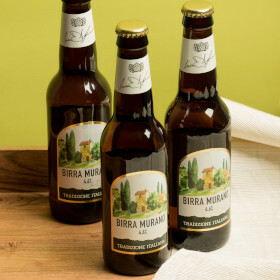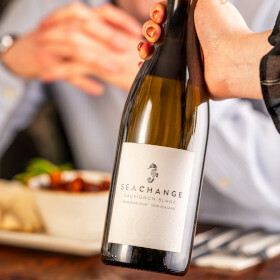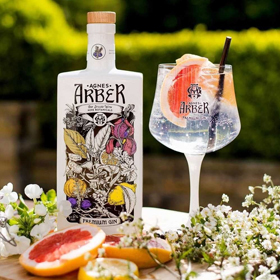HOW TO….Host Your Own Virtual Wine Tasting
Posted by Erin McCall on 17th Apr 2020
- Growers Gate Chardonnay
- I Castelli Pinot Grigio
- Constellations Sauvignon Blanc Reserva
- Le Farniente Cabernet Sauvignon
- Growers Gate Shiraz
- Alma de Chile Pinot Noir Reserva
- Te Papa Marlborough Sauvignon Blanc
- Le Farniente Viognier
- Bio Bio Organic Chardonnay
- Valpolicella Classico Superiore DOC Ripasso Monteci
- Marques del Atrio Crianza D.O.C Rioja
- Fleurie Marchand Bolnot Cuvee St Laurence
- Choose a room/space with good lighting
- Ensure the room is free of strong odours (avoid perfumes, aftershaves, candles if possible!)
- Ensure you have sufficient space to lay out your wine glasses and make notes
- Spittoons or spit cups should be available
- Recommended sample size is 50ml of wine which should be enough to assess all its elements without spilling out of the glass whilst you’re swirling it
- It is very easy to look at the wine in the glass and state whether the wine is white, red or rose in colour, but here are a few extra details you might want to include.
- White wines can be placed on a scale that runs from ‘lemon’ to ‘amber’. The most common colour for whites is ‘lemon’, but if you see a hint of orange or brown then it is ‘gold’. Wines with a noticeable level of browning would be described as ‘amber’. White wines can GAIN colour as they age, especially if aged in oak barrels
- Red wines can be placed on a scale that runs from ‘purple’ to ‘tawny’. The most common colour for reds is ‘ruby’, but if you see blue or purple then they can be described as ‘purple’. A noticeable orange or brown colour would be a ‘garnet’ wine, and if the wine is more brown than red it can be described as ‘tawny’. Red wines LOSE colour as they age.
- Rosé wines are usually described as ‘pink’ but they may also have hints of orange.
- Place your nose over the rim of the glass and take a short sniff, noting the characteristics of the aromas you find
- Aromas can come from 3 different sources ; the grape itself, the winemaking processes, and ageing/maturation
- Any fruit aromas will be from the grape variety. Think in terms of clusters then try and be more specific – if you smell red fruit for example can you pick out strawberry, cherry, raspberry etc.?
- Vanilla, smoke and oaky aromas will be present if the wine has spent time fermenting/ageing in oak barrels
- Extended ageing in oak or a long period spent in the bottle can show more complex aromas such as coffee or caramel caused by the action of oxygen
- Sweetness: Detected on the tongue, sweetness is the taste of sugars present in the wine. The majority of wines are ‘dry’ but some have a noticeable residual sugar level and can be referred to as ‘off-dry’ or ‘medium’. Dessert wines and certain fortified wines e.g. Port are always fully sweet.
- Acidity: Detected on the tongue and sides of the mouth, acidity causes a tingling sensation and makes your mouth water. The higher the level of acid in the wine, the more your mouth waters and the longer it waters for.
- Tannin: An important component in red wines, tannins are extracted from the skins of the black grapes during fermentation and bind to your saliva to cause your mouth to feel dry. They can sometimes have a bitter taste, similar to drinking a very strong black tea.
- Alcohol: At high levels, alcohol triggers pain receptors giving a hot burning sensation. Most wines are between 11-14% ABV which is classed as medium.
- Body: The ‘weight’ of the wine in the mouth which is created by all the other structural components (sugar, acidity, tannin, alcohol) working together. It is a 3 point scale of light, medium or full bodied. High levels of sugar, alcohol, tannin all make a wine feel heavier; whereas higher levels of acidity can make a wine feel thinner.
- Flavour: Generally, flavours on the palate should be the same as aromas detected on the nose. However, there may be additional characteristics found on the palate due to the wine warming in the mouth.
Ever wondered how to host your own virtual wine tasting?
Shaun Healy, Wine Director at ClickNDrink, recommends wine tasting options to suit a range of palates:
If you are new to the world of wine it can be a daunting prospect to start tasting and understanding what’s actually in a bottle. With 1000’s of different grape varieties from 100’s of countries, all with their own unique styles and features, knowing where to start isn’t always that straight forward.
So where to start?
If you’ve not done a virtual wine tasting before, I’d recommend hosting your virtual wine tasting with any of the below wines as they’re great for beginners - due to them being easier to characterise - and they’re not too expensive:
If bubbles are your thing then the following are ideal for virtual wine tasting:
If you’re slightly more experienced, I’d recommend trying wines with aromatic or regional characteristics:

All of these are available for home delivery at ClicknDrink.co.uk
Now let’s start the tasting….
STEP 1: Preparing for your Virtual Wine Tasting
STEP 2: Pour your sample and assess…
Appearance (Look)
It’s best to tilt the glass at a 45 degree angle to assess the appearance
Nose (Smell):
To assess the nose, you should swirl the liquid to release the aromas into the glass










